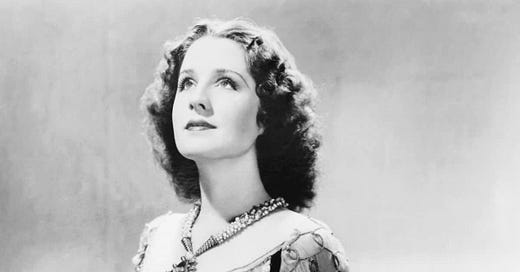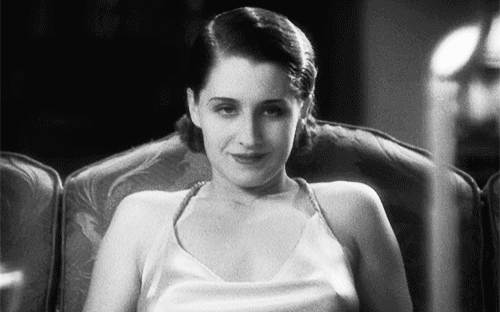(MGM Studios)
How someone is perceived throughout history is a complete crapshoot. Take movie star Greta Garbo. Retired from the film industry roughly 20 years into her acting career and is still an old Hollywood icon. But then you have another star, Norma Shearer, who essentially did the same thing, and is now primarily remembered by old movie fans. It might be a surprise to some that the biggest actress in the world in the 1930s wasn’t Garbo or Joan Crawford or Katharine Hepburn, but Norma. Initially from Montreal, Canada, the wavy haired brunette grew up comfortably in an upper middle class household before she, her sister, Athole, brother Douglas, and mother, Edith, moved to New York City in 1918 after Edith left their father, Andrew. From there, the two teenage girls began auditioning for chorus girl gigs and soon enough Norma was hired as one of the many models for the famous Ziegfeld Follies. Despite her natural charm and prettiness, Norma claimed casting directors, including Florenz Ziegfeld himself, would give her a hard time for supposedly being ‘plain looking’ and having a lazy eye. While appearing on the NYC stage, the Canadian also modeled for magazines and advertisements on the side. Because of the stigma against her looks, Universal turned her down when she auditioned for the film studio, even after taking medical exercises to fix her eye. Fortunately, studio heads Louis B. Mayer and Irving Thalberg thought otherwise, and signed her in 1923 to a production company they were planning on merging within a year: Metro-Goldwyn-Mayer. At only 22, Norma was one of the very first actors hired for the Hollywood studio. This would also be an important partnering for Norma and Irving, who would begin dating in 1925 before marrying in 1927 and conceiving two children: Irving Jr. [1930-1987] and Katherine [1935-2006].
From the silent era to pre-Code talkies to the golden age of Hollywood, Norma rose to stardom co-starring in hits like Victor Sjöström’s He Who Gets Slapped (1924), Monta Bell’s Lady of the Night (1925), Sidney Franklin’s Private Lives (1931), Clarence Brown’s Idiot’s Delight (1939) and George Cukor’s The Women (1939). She won Best Actress at the Academy Awards for her performance in Robert Z. Leonard’s The Divorcee (1930) and received five other nominations in the same category for E. Mason Hopper’s Their Own Desire (1929), Clarence Brown’s A Free Soul (1931), Sidney Franklin’s The Barretts of Wimpole Street (1934), George Cukor’s Romeo & Juliet (1936) and W.S. van Dyke’s Marie Antoinette (1938).
(Hulton Archive)
At the height of her popularity, Norma was referred to by movie fans and the press as either the ‘Queen’ or ‘First Lady’ of MGM, for both her successful runs at the box-office as well as being the wife of one of the studio’s execs. Titles she and Irving would have to battle to keep when newspaper mogul W.R. Hearst tried to crossover his mistress, Marion Davies, to MGM’s top female star in the mid-1930s. At the same time Norma was reaching superstardom, her brother Douglas was a sound designer for MGM with 12 Oscar wins; while sister Athole was a socialite once married to film director Howard Hawks and sadly had a tough history of mental illness.
Although Irving and Norma seem like they were living a perfect, real-life fairytale, things were unfortunately cut prematurely only nine years into marriage. Plagued with physical weakness and prone to sicknesses while growing up, Irving died from pneumonia at only age 37 in 1936. Crushed, Norma completely left Hollywood six years later in 1942. Though she successfully married a ski instructor named Martin Arrougé that same year until her death in 1983, Irving is generally considered the love of her life. She refused to take off her wedding band, even when playing characters who were single; converted to his family’s religion, Judaism; and even went through with raising a family despite not having maternal instincts before the relationship. Norma has always fascinated me because of how she managed to succeed both professionally and domestically, and then some. She helped pioneer the ‘strong female character’ type in early cinema with her independent, rebellious roles, as well as pulled off playing heroines in costume dramas and romantic comedies. The actress might not have become a household name to future generations, but she is still a big figure to historians and old Hollywood fans, and The Women has been one of my favorite movies since high school. The name Norma Shearer will always be relevant to those who care about film history.






